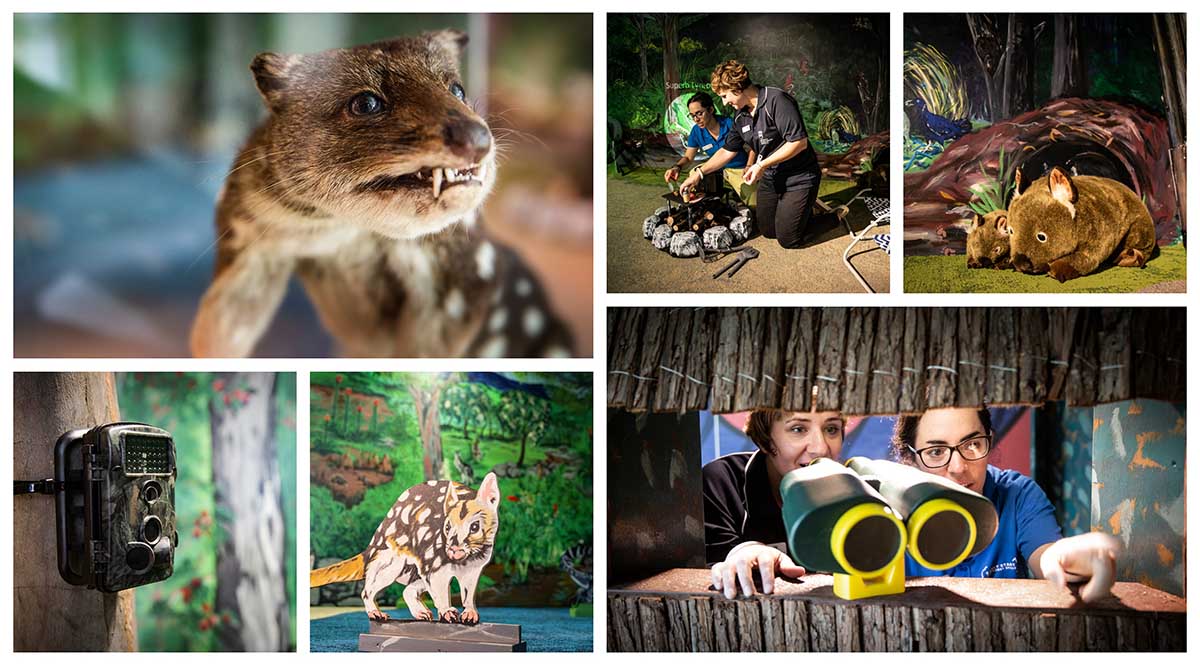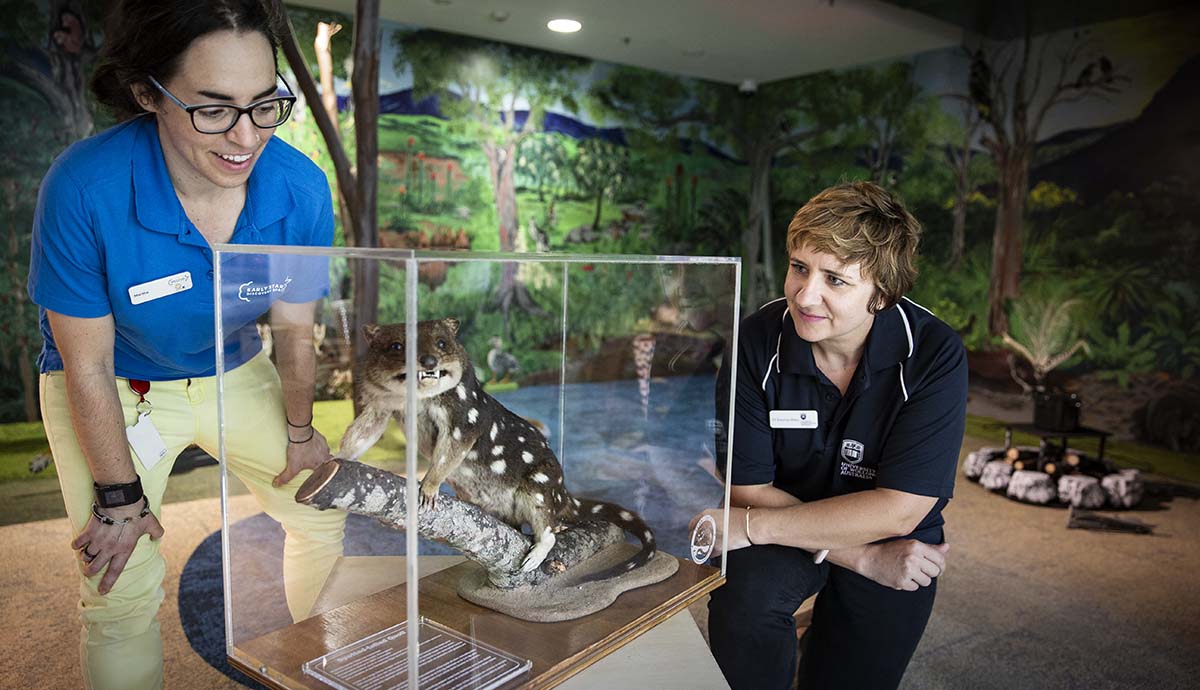February 5, 2019
Spotted-tail quoll the star of new Discovery Space experience
‘The Campsite’ teaches children about marsupial predator and conservation science
The enigmatic spotted-tail quoll is the star of a new experience that opens today (Tuesday 5 February) at the University of Wollongong’s Early Start Discovery Space.
The Campsite experience takes visitors into a bushland setting where they can take on the role of researcher, camper, bushwalker or birder, and try to identify quolls and other animals through their scats, tracks and calls.
Nocturnal and elusive, most people know very little about spotted-tail quolls (also known as tiger quolls), even though they are mainland Australia's largest carnivorous marsupial and closely related to the now-extinct Thylacine (Tasmanian tiger).
The experience draws on the research of Dr Katarina Mikac from UOW’s School of Earth, Atmospheric and Life Sciences, and will engage visitors in the importance of conservation. It will also give visitors insight into the work of biologists and let them experience some of the methods they use.
Dr Mikac and her ‘Team Quoll’ colleagues, along with volunteer “citizen scientists”, have been working to track the location and numbers of tiger quolls in the Hunter, Illawarra and Shoalhaven, to help ensure the native marsupial’s long-term survival.
The team sets up stations in strategically located areas of native bush, with lures filled with “something smelly” – tempting pieces of chicken, sardines or tuna oil – and hidden cameras to record quolls or other creatures attracted to it. While their methods vary depending on the study, mostly they cover large tracts of land with multiple camera stations set up approximately one kilometre apart.
“The spotted-tail quoll is a ‘landscape species’ – they need a lot of space to live and move around in, so our research is also on a large scale. With a species like the spotted-tail quoll you need to look quite broadly over many kilometres because they can travel upwards of six kilometres a night,” Dr Mikac said.
The resulting photographs reveal the number of quolls in a particular area (each quolls’ spot patterns are unique, making it easy to identify individuals), along with other animals such as cats and foxes.
“Even though we set out to survey spotted-tail quolls, using those methods you can survey lots of different mammal species as well – good ones like bandicoots and potoroos, and not-so-nice ones like foxes and cats, wild dogs,” Dr Mikac said.
“We also get birds on the cameras. We once got eastern ground parrot, a threatened bird that's rarely seen, and we caught it on the camera. It’s a fun exercise to go through the camera trap footage because you see almost anything – including humans sometimes.”
Spotted-tail quolls have reddish-brown fur with white spots on their backs and tails (the eastern quoll has similar markings but no spots on its tail). Adult females are about the size of a domestic cat, weighing about 2 kilograms. Adult males are significantly larger, around 3.5 kilograms and the size of “a well-fed cat, which is why early settlers often confused them for cats”, Dr Mikac said.
They are an endangered species nationally, and listed as vulnerable in NSW.
“They are a top predator, so an important animal in the ecosystem. When they're present in a particular patch of bush it means that ecosystem is healthy, that there's a range of different habitat types and a range of different food and so on. If you've got quolls then you know you're in healthy bush. And in the Illawarra escarpment, from here all the way down to Eden, we've got quolls.”

The Discovery Space Campsite experience features photos and video from Dr Mikac’s research, as well as a camera station set-up with camera and lure (but no smelly quoll treats in the lure), with visitors challenged to identify the different species caught on camera.
It has a real (taxidermy) spotted-tail quoll, nicknamed “Quolly”, allowing visitors to see a real quoll up close.
There are activities where visitors can try to match tracks to animals, and where they can sort scats (not real ones), trying to figure out which poo belongs to which animal and what an animal’s scat reveals about its diet.
The Campsite also has a large mural of an Illawarra bush scene featuring an array of native flora and fauna. Alongside it is a bird-spotting hide where the challenge is to identify the different birds and the sounds they make.
“It’s going to be a really authentic experience because it is actually what we do. The scientific methods we use are very straightforward but also very robust. It’s sophisticated conservation and ecological science in action that actually is very accessible. It’s going to be a powerful experience.”
Discovery Space Education and Experience Manager Martha Johnson said the Campsite experience was suitable for children from birth to 10-years-old, with different aspects and activities to appeal to different age groups.
“For example, with the Bird Hide, the three-to-five year olds will enjoy playing ‘spotto’, while older children can engage with it by using an app that helps them identify the different birds and teaches them more about them,” Ms Johnson said.
“The experience has been designed to give people an understanding of quolls and of conservation, but also to connect them to their local area. The mural is of typical Illawarra escarpment forest with all the plants and animals native to the Illawarra. We’ve tied in the Dharawal story of Geera and her five sisters, with Mt Keira present in the background and her five sisters represented in plant form.
“It will spark their curiosity about quolls and other wildlife, and by engaging with different activities help them to become confident and involved learners with the know-how to become citizen scientists.”
Visitors to the Discovery Space can make a contribution towards protecting spotted-tail quolls by depositing cans and bottles in a specially marked bin, with the 10c refund going towards quoll research.
